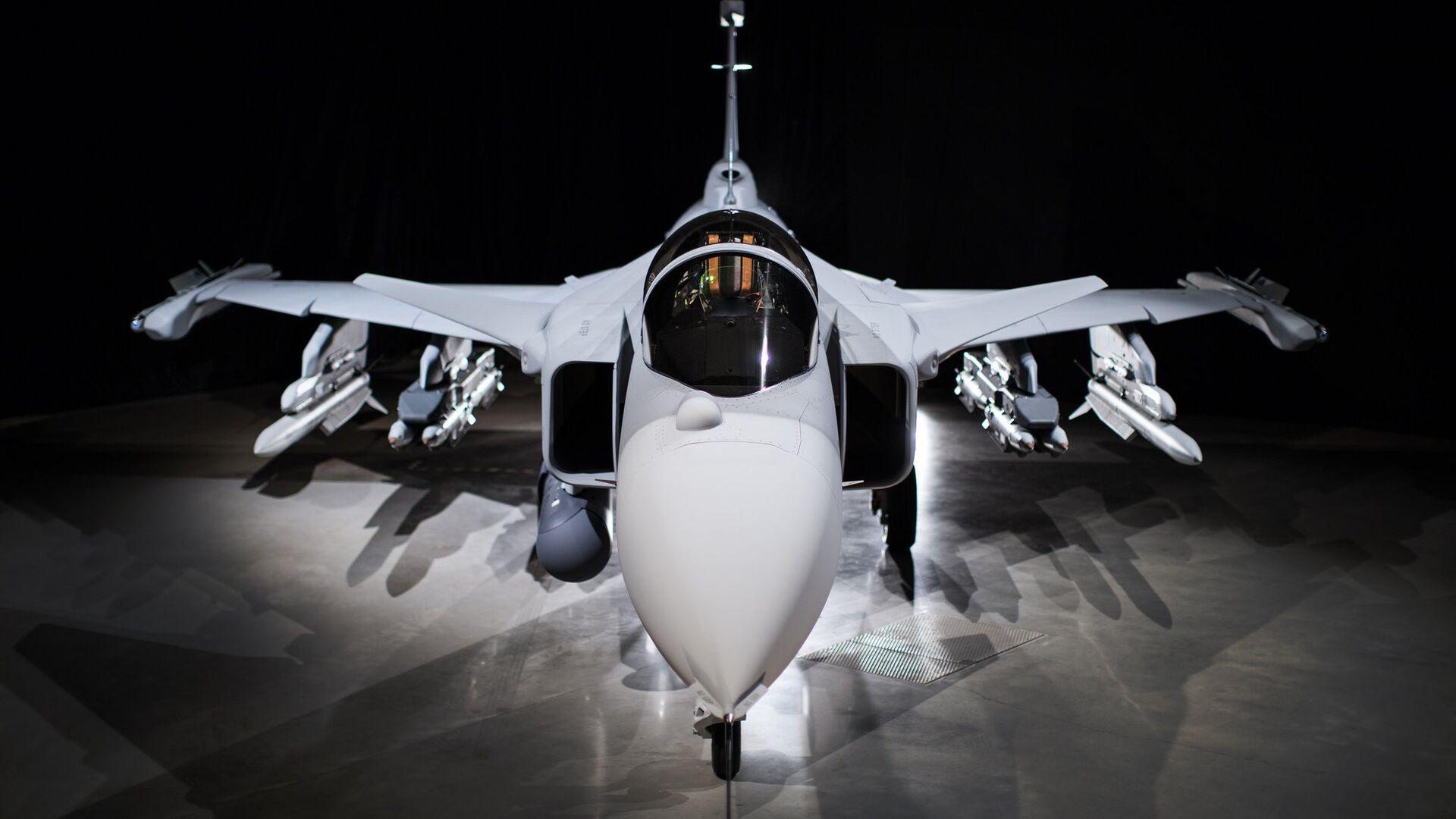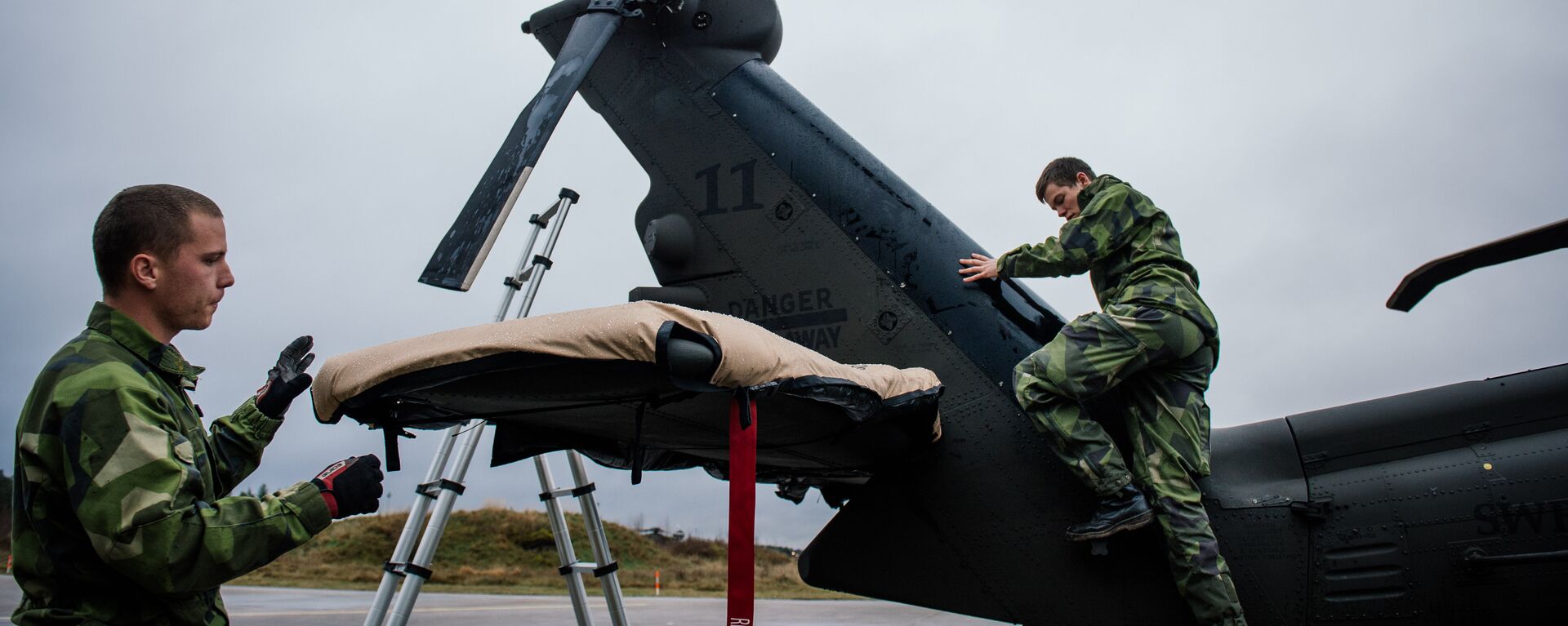Saab Eyes 'Sweden's Largest Export Order Ever' Amid Fierce Competition, Analysts' Scepticism

CC0 / /
Subscribe
While Saab previously voiced plans to sell 450 Gripen fighter jets worldwide, only 96 have materialised so far. With giant prospective arms deals with Canada and Finland, the company hopes to add new blood to its fighter jet project, which is aimed to last decades and ease the burden on the Swedish taxpayers.
Swedish arms manufacturer Saab is hoping for two major deals, each of which could potentially become the country's biggest export order ever.
As Finland and Canada are both in the process of pursuing air force upgrades, Saab hopes to step in with its Gripen fighter jets.
“These are two fantastic deals. If we succeed in landing either of them, it will be Sweden's largest export order ever,” head of Saab's aircraft division Jonas Hjelm told the newspaper Svenska Dagbladet. According to Hjelm, the deals would have a huge impact on both Saab and Sweden as such.
Saab hopes to sell Sweden 64 Gripen E warplanes together with two Globaleye radar reconnaissance planes to the total tune of over SEK 80 billion ($8.9 billion). Additionally, there has been talk of selling Canada 88 Gripen E jets, for a maximum amount of SEK 105 billion ($11.7 billion).
If the deals become a reality, in addition to major funds it will contribute to the longevity of the Gripen project. The Gripen is expected to be in operation until 2060, and during that time more countries will share development costs, easing the burden for Swedish taxpayers.
However, the competition is fierce, as two of the manufacturers have already dropped out of the Canada race, with only Saab and two US companies (Lockheed Martin with the F-35 and Boeing with the F-18 Super Hornet) remaining in the fight. The French company Dassault, with the Rafale, and the European Eurofighter group withdrew due to difficulties meeting Canada's requirements. In Finland, by contrast, the starting field is intact, with five competitors.
The Gripen's major advantage, as touted by Saab itself, is that it is a largely new plane, that will be further developed over decades to come. Furthermore, the jet has new advanced computer systems and systems for electronic warfare and is considerably less expensive, both in terms of purchase and operation, compared with its US rivals. However, its obvious weaknesses include the lack of stealth options and smaller size which leads to lower payload. Furthermore, the Gripen comes from a small country that can not provide any further promises of military support to the prospective buyer, admitted Saab's Hjelm.
The Gripen's major advantage, as touted by Saab itself, is that it is a largely new plane, that will be further developed over decades to come. Furthermore, the jet has new advanced computer systems and systems for electronic warfare and is considerably less expensive, both in terms of purchase and operation, compared with its US rivals. However, its obvious weaknesses include the lack of stealth options and smaller size which leads to lower payload. Furthermore, the Gripen comes from a small country that can not provide any further promises of military support to the prospective buyer, admitted Saab's Hjelm.
Despite the company's rosy expectations, market analysts are rather special.
“I don't expect any orders from Canada. As for Finland, I have some hope, but I do not value it in my forecasts,” Danske Bank analyst Björn Enarson told Svenska Dagbladet.
A similar take was offered by analyst Douglas Lindahl of Kepler Cheuvreux.
“I see Saab's opportunities to win as low, especially in Canada. Although Finland has become more and more likely,” Lindahl said, stressing the close defence co-operation built up between Sweden and Finland.
“I see Saab's opportunities to win as low, especially in Canada. Although Finland has become more and more likely,” Lindahl said, stressing the close defence co-operation built up between Sweden and Finland.
Saab's management has previously stated that they should be able to sell around 450 Gripen E/F warplanes in total. However, so far, the only deals have been struck with Sweden and Brazil totalling 96 jets.
“If we are optimistic, 450 is not an unreasonable figure. But somewhere at 300 plus is realistic”, Jonas Hjelm, concluded, lowering the expectations quite a bit.
The Finnish government is expected to make a decision before the end of the year. Canada is due to voice its decision sometime in 2022.
Saab is a staple of Sweden's defence industry, present in the list of the world's largest arms exporters by Stockholm International Peace Research Institute (SIPRI).

